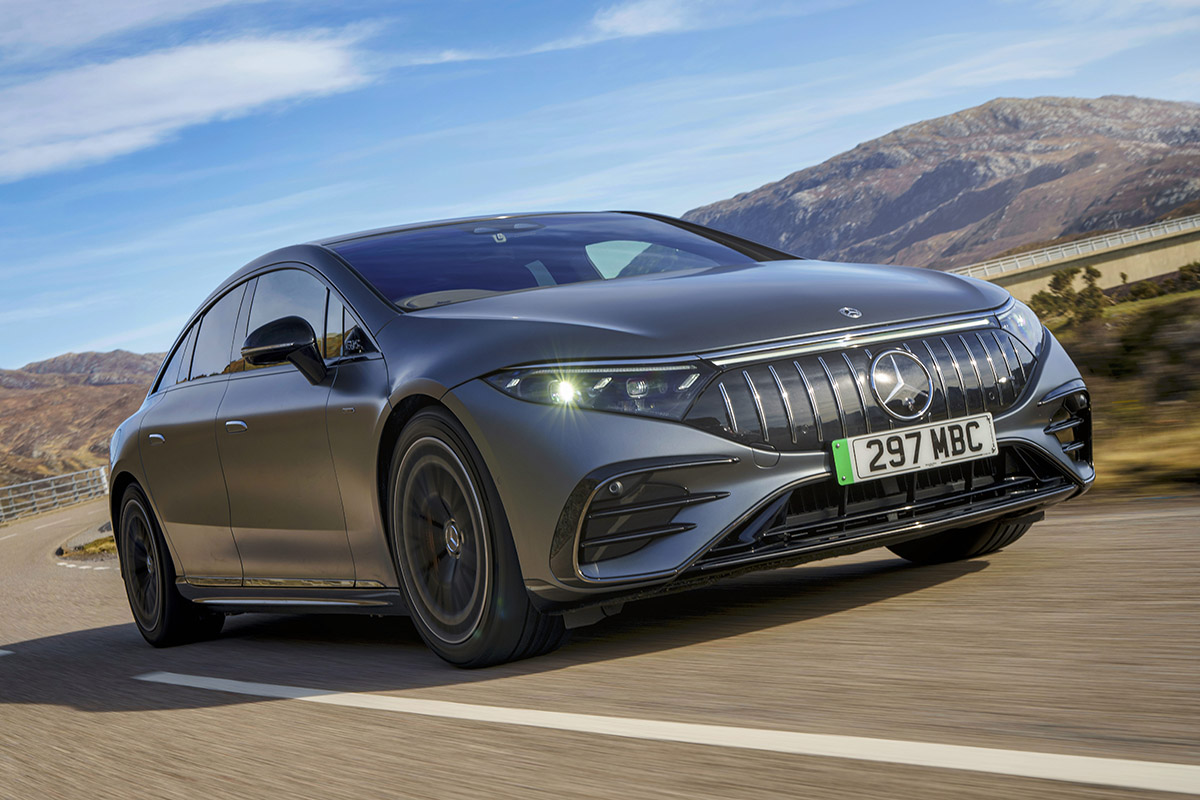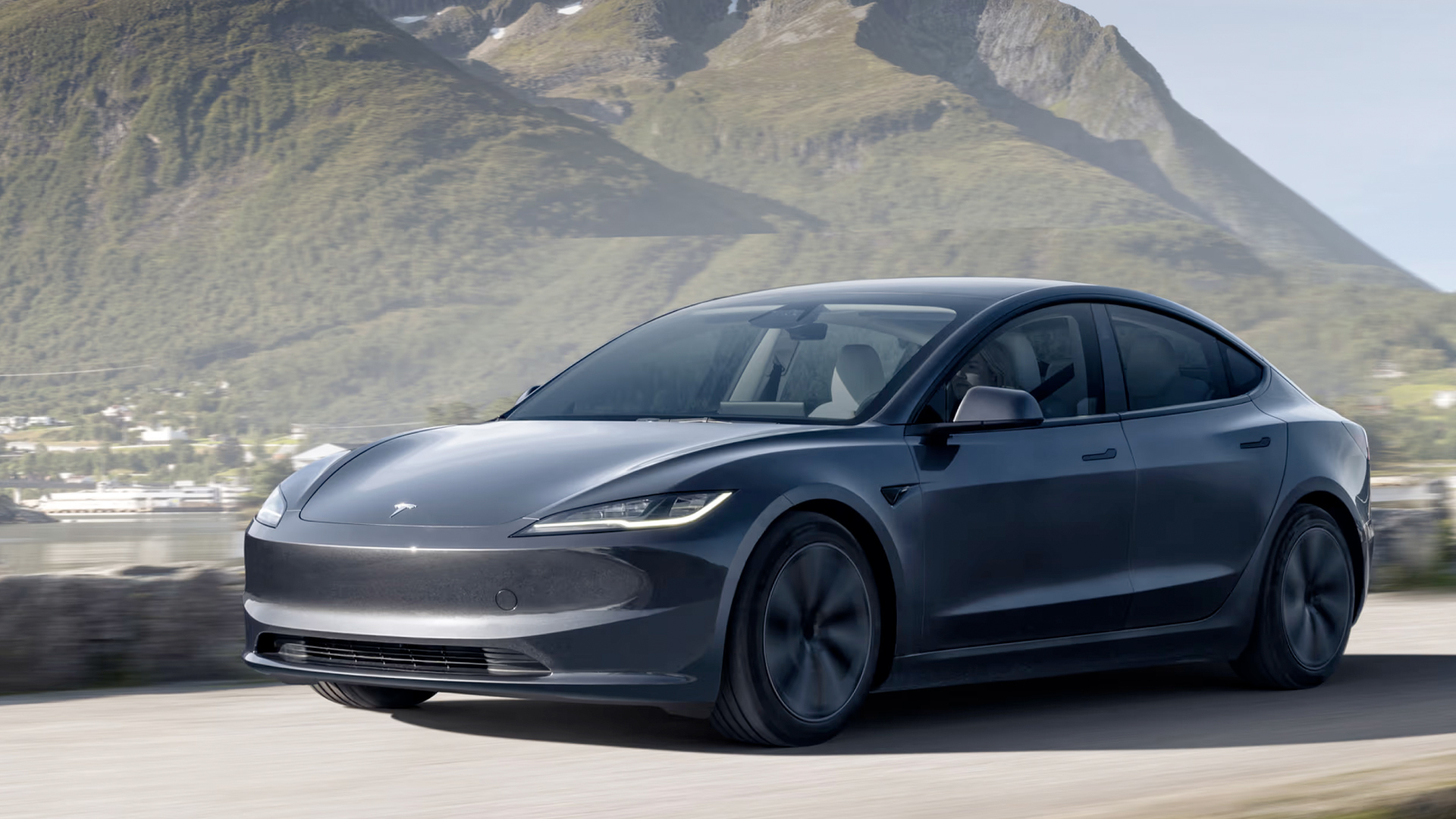When talking about the electric cars with the longest ranges, it's easy to forget that we’ve come a long way since the original Nissan Leaf went on sale in 2011 with a range of just 109 miles. Today, the longest-range electric cars can manage more than 400 miles between charges and some, as we'll see, can manage nearly 500 miles.
Okay, not everyone needs an EV that’ll go from London to Edinburgh without having to stop to charge the battery. However, having a generous maximum range figure under your belt is a good way to stave off the range anxiety that puts so many off electric motoring, especially when the UK charging network is still developing.
It’s important to remember that we’re talking about official WLTP range figures when quoting numbers here. These are obtained from laboratory tests, the conditions of which can often be all-but-impossible to replicate in the real world. That means you should never rely on actually getting your car’s maximum figure, especially if you’re driving at motorway speeds or in cold conditions, neither of which electric cars like. However, WLTP tests do provide a level playing field for comparison, so they’re a good indicator of which cars will give you the most range. Here’s our rundown of the new electric cars on sale today with the longest ranges.
Electric Cars with the Longest Range 2025
- 1. Mercedes-Benz CLA
- 2. Mercedes-Benz EQS Saloon
- 3. Audi A6 Sportback E-Tron
- 4. Polestar 3
- 5. Tesla Model 3
- 6. Peugeot E-3008
- 7. Volkswagen ID.7
- 8. Mercedes-Benz EQE
- 9. BMW iX
- 10. Porsche Taycan
1. Mercedes-Benz CLA: 484 miles
Mercedes-Benz often reserves its most advanced tech for its larger models, but it has pulled out all the stops with the latest version of the CLA, its smallest ‘four-door coupe’ (you could legitimately call it a saloon). The first pure-electric version, which is snappily named ‘CLA with EQ Technology’, has a very aerodynamic exterior, a two-speed transmission (a feature until now found on high-end luxury EVs) and some other clever stuff that gives a maximum range of 484 miles – outdoing not only similarly priced rivals but also some far more expensive models.
There’s also the ability to accept mega-fast 320kW charging, which will allow you to add 200 miles of range in just 10 minutes if you can find an 800V charger. Inside, there’s very little dashboard to speak of, just a huge combined display and touchscreen. Prices start at more than £45,000, but in terms of battery range per pound that blows the other cars on this list out of the water.
2. Mercedes-Benz EQS Saloon: 481 miles
It might have been knocked off top spot here by the smaller CLA, but the Mercedes-Benz EQS remains a technological tour-de-force. Most notable is the vast 107.8kWh battery pack that - along with the car’s sleek, aerodynamic shape - gives the entry-level EQS 450+ model a stonking range of 481 miles.
That’s not where the tech and innovation stops, either. The EQS can be specified with the optional ‘Hyperscreen’ infotainment system, which basically turns to entire dashboard into one massive touchscreen, which smartphone lovers will absolutely adore.
Mercedes-Benz EQS Review
3. Audi A6 Sportback E-Tron: 463 miles
You can choose from two battery options and two body styles with the Audi Audi A6 E-Tron – for the maximum battery range of 463 miles you need to go for the Sportback (hatchback) version, with the larger (94.9kWh) battery. Opt for the A6 Avant E-Tron estate model and you get an even more boot space but a maximum range that's 26 miles shorter but still hugely impressive.
The A6 E-Tron is an entirely different car from the latest A6, in case you were wondering – the only thing the two models have in common is their name, some interior fittings and similar dimensions. You pay more for the E-Tron, of course, with a starting price that's about £10,000 higher. But the A6 E-Tron is classy, good to drive, and up there with the best of them when it comes to long-range electric motoring.
Audi A6 E-Tron review
4. Polestar 3: 438 miles
The Polestar 3 is a large luxury SUV that had excellent battery range from the start, but the addition of a new model to the lineup in 2024 bumped it up a good few places in this list. The new long-range single-motor version goes further than any other model in the range, outdoing rivals such as the Audi Q8 E-Tron, BMW iX and Tesla Model X in the process.
It also supports rapid charging of up to 250kW, meaning that whopping 107kWh battery pack can be topped up 10-80% in just half an hour at a sufficiently powerful charging point. Expect bags of safety equipment and luxury gadgetry, including the cutting-edge Android Automotive infotainment system.
Polestar 3 review
5. Tesla Model 3: 436 miles
If the Model S was the car that earned Tesla a seat at the top table of electric motoring, the Model 3 was the car that hogged all the other seats to make sure that nobody else could sit down. Its popularity may have since been surpassed by the Model Y SUV, but Tesla’s compact saloon has sold in huge numbers over the years, arguably making the American firm the powerhouse it is today.
An update in 2024 helped to keep the Model 3 competitive with newer rivals, bringing in an upgraded interior, and tech changes to make it quieter and more comfortable. Redesigned front and rear ends give a sharper look and reduce aerodynamic drag which, you guessed it, helps to improve battery range. It might have been around since 2019 but the Model 3 remains at the cutting edge of EV technology.
Tesla Model 3 Review
6. Peugeot E-3008: 435 miles
On the face of it, the Peugeot E-3008 – a pure-electric version of the humble 3008 family-favourite SUV – seems like it's in rarefied company here, going toe-to-toe with luxury saloons and SUVs that cost a lot more. That's until you realise that to get the maximum 435-mile range you need to go for the version with the larger battery, which has a starting price of more than £48,000.
Even so, the E-3008 certainly looks the part thanks to sharp-edged, futuristic styling. It's especially dazzling inside, with a dashboard and display screen that look like they've come straight out of a concept car. You also get a massive boot and lots of rear-seat passenger space, despite the coupe-like roofline.
Peugeot E-3008 review
7. Volkswagen ID.7: 433 miles
Volkswagen's family of electric cars includes the Golf-like ID.3 hatchback and uber-cool ID.Buzz MPV but it's the ID.7 – a large, executive-style hatchback – that tops the lot for battery range.
It's a similar size to the Passat and has a spacious, high-quality cabin, excellent comfort and refinement and a brilliant safety rating, all of which will be very appealing to family car buyers. It also has an impressive range of 433 miles. If you want even more space there's the ID.7 Tourer version, which trades a few miles of range for an estate-style rear end and a vast boot capacity of more than 600 litres.
Volkswagen ID.7 Review
8. Mercedes-Benz EQE: 429 miles
It’s a third entry on our list for Mercedes, this time in the form of the EQE, which is essentially the electric alternative to the E-Class saloon. It shares a platform with the EQS that sits near the top of this list, but it has a slightly smaller battery at 90kWh.
Nevertheless, it’s still capable of a very impressive 429 miles with a fully charged battery due to its aerodynamic coupe-like shape and good thermal efficiency. Ride comfort and refinement are both deeply impressive, while the cabin is roomy, luxuriously trimmed and brimming with tech.
Mercedes-Benz EQE Review
9. BMW iX: 426 miles
The BMW iX was updated in 2025, gaining more range and more power. There were a few other improvements, too, including new designs for the front headlights, bumper and grille. It still looks rather ‘challenging’, but it's a bit sleeker than before.
There weren't many changes on the inside but there didn't need to be – the cabin is a real highlight. Spacious, gorgeously-trimmed and beautifully designed, it also packs one of the most impressive, easy-to-use infotainment systems fitted to any car. The iX is great to drive, too – all versions give strong performance and it's an extremely quiet and comfortable car to travel in.
BMW iX Review
10. Porsche Taycan: 421 miles
Somewhat unusually, it's the entry-level version of the Porsche Taycan that has the longest range among the lineup. We say 'entry-level', but these things are relative – we're still talking about a luxurious four-door sports car (saloon doesn't really do it justice) that costs more than £88,000 and will hit 62mph from a standstill in less than five seconds.
Whichever Taycan you go for, you get space for four in an interior that's a masterful fusion of craftsmanship and high-tech features. You also get the kind of involving, confidence-inspiring drive that Porsche's best cars deliver. So what's at the top of the range? That'll be the Taycan Turbo GT with Weissach Package, which costs nearly £190,000, has a range of 345 miles and will do 0-62mph in a mind-blowing 2.2 seconds.
Porsche Taycan review
Note: Figures accurate at the time of publication, but are subject to regular change and so should be checked independently.










